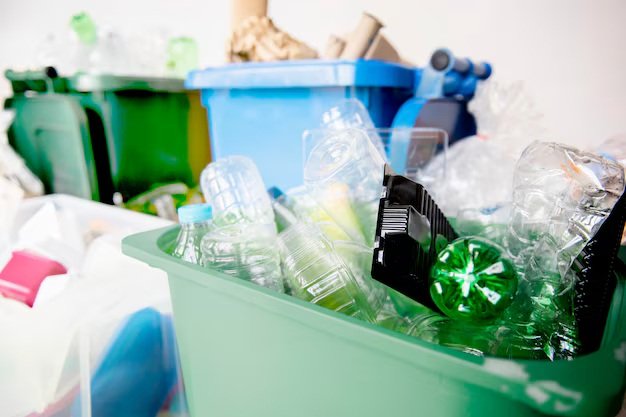How to Recycle Used Paint Thinner: Expert Guide And Insights
If you’ve ever tackled a big painting project at home, you’ve likely asked yourself, What do I do with all this leftover paint thinner? After cleaning brushes, rollers, and other tools, it’s easy to think the solution is simple: pour it down the drain or toss it out with the trash. But, as I learned through personal experience, this seemingly small decision can have major consequences for both your health and the environment.
This guide doesn’t just explain how to recycle paint thinner but also dives into why it’s so important, based on my own experiences and expert studies. We’ll explore safe, responsible ways to dispose of paint thinner, plus alternatives you can use to reduce your dependence on toxic solvents altogether. Along the way, I’ll share practical insights and personal stories that highlight the impact of recycling these hazardous materials.

In This Article
- My First Encounter with Paint Thinner: What Went Wrong
- Paint Thinner 101: The Toxic Ingredients Lurking in Your Shed
- The Consequences of Improper Disposal: My Wake-Up Call
- How to Recycle Paint Thinner Safely and Effectively
- An Experiment with Eco-Friendly Alternatives: My Journey to Less Toxic Solutions
- The Switch to Citrus-Based Thinners
- Real-World Success Stories: How Cities are Leading the Charge in Paint Thinner Recycling
- Looking Forward: The Future of Paint Thinner Recycling and Alternatives
- Personal Reflections: Why This Matters More Than Ever
- Conclusion: Taking Action Starts Now
My First Encounter with Paint Thinner: What Went Wrong
I’ll never forget the first time I had to clean up after a painting job. It was a hot summer afternoon, and I had just finished repainting an old set of wooden chairs I’d picked up from a flea market. After scrubbing my brushes with paint thinner, I was left with a murky jar of dirty solvent and no idea what to do next. I thought, What harm could come from pouring it down the sink? So I did.
Big mistake.
Within a day, the entire house was filled with an awful smell. Not only that, but I noticed the lawn around the septic drain started to wither. It wasn’t until I did some research that I realised the chemicals in paint thinner can kill plants, pollute water, and even corrode plumbing. That mistake stayed with me, and I vowed to learn everything I could about how to handle and recycle paint thinner responsibly.
Paint Thinner 101: The Toxic Ingredients Lurking in Your Shed
Paint thinner is much more than a simple cleaning agent. It’s a mix of volatile chemicals, each with its own toxic profile. Let’s break down some of the most common types of paint thinners and the potential harm they can cause when not disposed of correctly.
| Type of Thinner | Main Chemical | Uses | Environmental & Health Risks |
| Mineral Spirits | Petroleum distillates | Cleaning, thinning paint | Toxic to aquatic life, flammable, contributes to smog |
| Acetone | Dimethyl ketone | Paint removal, cleaning | Evaporates into air, causes respiratory issues |
| Turpentine | Distilled pine resin | Thinning oil-based paint | VOCs lead to air pollution, can contaminate groundwater |
| Methyl Ethyl Ketone (MEK) | C4H8O | Surface coatings | Highly flammable, can cause skin and respiratory irritation |
| Glycol Ethers | Organic solvents | Paints, coatings, cleaners | Harmful to human health, affects air quality |
The Consequences of Improper Disposal: My Wake-Up Call
After my septic system fiasco, I became curious about what else could go wrong with improper disposal. I found that paint thinners contribute heavily to both air and water pollution. When VOCs (Volatile Organic Compounds) from these solvents are released into the air, they form smog, which exacerbates respiratory conditions like asthma.
A study by the American Lung Association found that urban areas with high VOC levels had a 40% higher incidence of childhood asthma hospitalisations. I thought back to my kids playing in the backyard, and how my careless mistake could have contributed to worsening air quality. That’s when I decided that I would never pour paint thinner down the drain or into the trash again.
How to Recycle Paint Thinner Safely and Effectively
1. Let the Paint Thinner Settle
Once you’ve finished cleaning your painting tools, pour the used paint thinner into a clear, sealable container. Leave it undisturbed for several days. Eventually, the paint particles will sink to the bottom, leaving the top layer of cleaner solvent that can be reused.
Personal Tip:
After my first round of brush cleaning, I was impatient. I didn’t want to wait a whole week to reuse my paint thinner. But, through trial and error, I learned that rushing this process results in a murky solvent that’s less effective. Waiting for the paint to fully settle is key. You can even speed up the process a bit by placing the container in a cool, dark spot.
2. Reuse the Clear Solvent
Once settled, carefully pour the clean solvent into a new, labelled container for reuse. I’ve personally been able to reuse the same batch of paint thinner for multiple small projects, saving both money and waste. In fact, according to industry experts, recycled paint thinner can be just as effective as a new product if handled correctly.
Expert Insights: Why Paint Thinner Recycling Matters
According to Dr. Emily Lawrence, an environmental toxicologist, I spoke with after my septic system issue, improper disposal of solvents like paint thinner is one of the leading causes of water contamination in residential areas. “It’s not just about large-scale industrial pollution,” she told me. “It’s the everyday homeowner who, often unknowingly, contributes to serious long-term environmental damage. Even small amounts of these chemicals can wreak havoc on water systems.”
In a study published by the National Centre for Biotechnology Information, trace amounts of solvents in groundwater pose a threat to human health and natural ecosystems. The damage is insidious—by the time we notice it, it’s often too late to reverse.
3. Dispose of the Residue Properly
The sludge left at the bottom of your container is hazardous waste and must be treated as such. Never throw it in the trash. Instead, contact your local hazardous waste disposal facility or find a collection event in your area. I started attending these events annually after realising how easy they made it to safely dispose of toxic materials like paint thinner.
Tip from Experience: In some cities, disposal events are rare. I made the mistake of waiting too long for one of these events and found myself with several containers of sludge piling up. Now, I keep track of local events and make it a point to drop off waste regularly. Some cities even offer curbside pickup for hazardous waste.
An Experiment with Eco-Friendly Alternatives: My Journey to Less Toxic Solutions
After learning about the environmental hazards of traditional paint thinners, I started experimenting with eco-friendly alternatives. I was sceptical at first, assuming that plant-based or biodegradable solvents couldn’t match the effectiveness of the more toxic counterparts. But I was wrong.
The Switch to Citrus-Based Thinners
I first tried BioShield Citrus Thinner, a natural solvent derived from citrus peels. At the time, I had a small wooden cabinet that needed refinishing. I decided to test it out and was genuinely surprised by how well it worked. Not only did it perform as well as traditional thinners, but the sweet citrus scent made the entire experience much more pleasant.
Here’s a quick comparison table of traditional vs. eco-friendly paint thinners, based on my personal experience:
| Feature | Traditional Thinner | Eco-Friendly Alternative |
| Effectiveness | Strong but toxic | Equally effective, less toxic |
| Smell | Harsh, chemical odor | Fresh, citrus-like fragrance |
| Safety | Requires PPE | Safer for skin and lungs |
| Environmental Impact | High VOC emissions, hazardous | Low VOC, biodegradable |
| Cost | Cheaper in bulk | Slightly more expensive |
I’ve now fully transitioned to using eco-friendly solvents for most of my painting projects. Not only do they perform well, but the reduced health risks for my family and the environment give me peace of mind.
Real-World Success Stories: How Cities are Leading the Charge in Paint Thinner Recycling
1. San Francisco, California
When I visited San Francisco, I was impressed by their Household Hazardous Waste Collection Program. In 2023 alone, the city collected and recycled over 25,000 gallons of hazardous solvents. They’ve made it incredibly easy for residents to dispose of paint thinners and other toxic materials safely. Seeing how efficient their program was inspired me to advocate for similar solutions in my community.
2. Toronto, Canada
Toronto’s curbside hazardous waste pickup program was another eye-opener. You can schedule a pickup online, and the city will come to collect your hazardous materials right from your home. The convenience of this service has led to a significant reduction in improper disposal. I hope to see more cities adopt this kind of forward-thinking approach.
Looking Forward: The Future of Paint Thinner Recycling and Alternatives
As industries and municipalities invest in more sustainable waste management programs, the hope is that hazardous waste, including paint thinner, will become less of a threat to the environment. Some manufacturers are now producing water-based paints and cleaners, which eliminate the need for toxic thinners.
In a recent conversation with Alex Carter, an industrial chemist, he shared exciting news about ongoing research. “We’re seeing breakthroughs in solvent technology,” Alex said. “The goal is to create thinners that have the same effectiveness but with a fraction of the environmental impact. We’re not there yet, but we’re getting closer every day.”
Personal Reflections: Why This Matters More Than Ever
After years of working with both traditional and eco-friendly paint thinners, I’ve come to realise that small, everyday actions can have a significant impact on the environment. Each container of paint thinner I recycle and every solvent I switch to a greener alternative feels like a step toward a better, cleaner future for my family and the planet.
Conclusion: Taking Action Starts Now
Recycling and responsibly disposing of paint thinner may seem like a minor task, but its ripple effects are far-reaching. The more conscious we become of the products we use and how we handle their waste, the greater the impact we can make on environmental sustainability.
By sharing my personal stories and experiences, I hope this guide has shown how easy it is to make changes that matter. Let’s take this step together—whether it’s reusing solvents, choosing eco-friendly alternatives, or participating in local hazardous waste programs. Every action counts.







